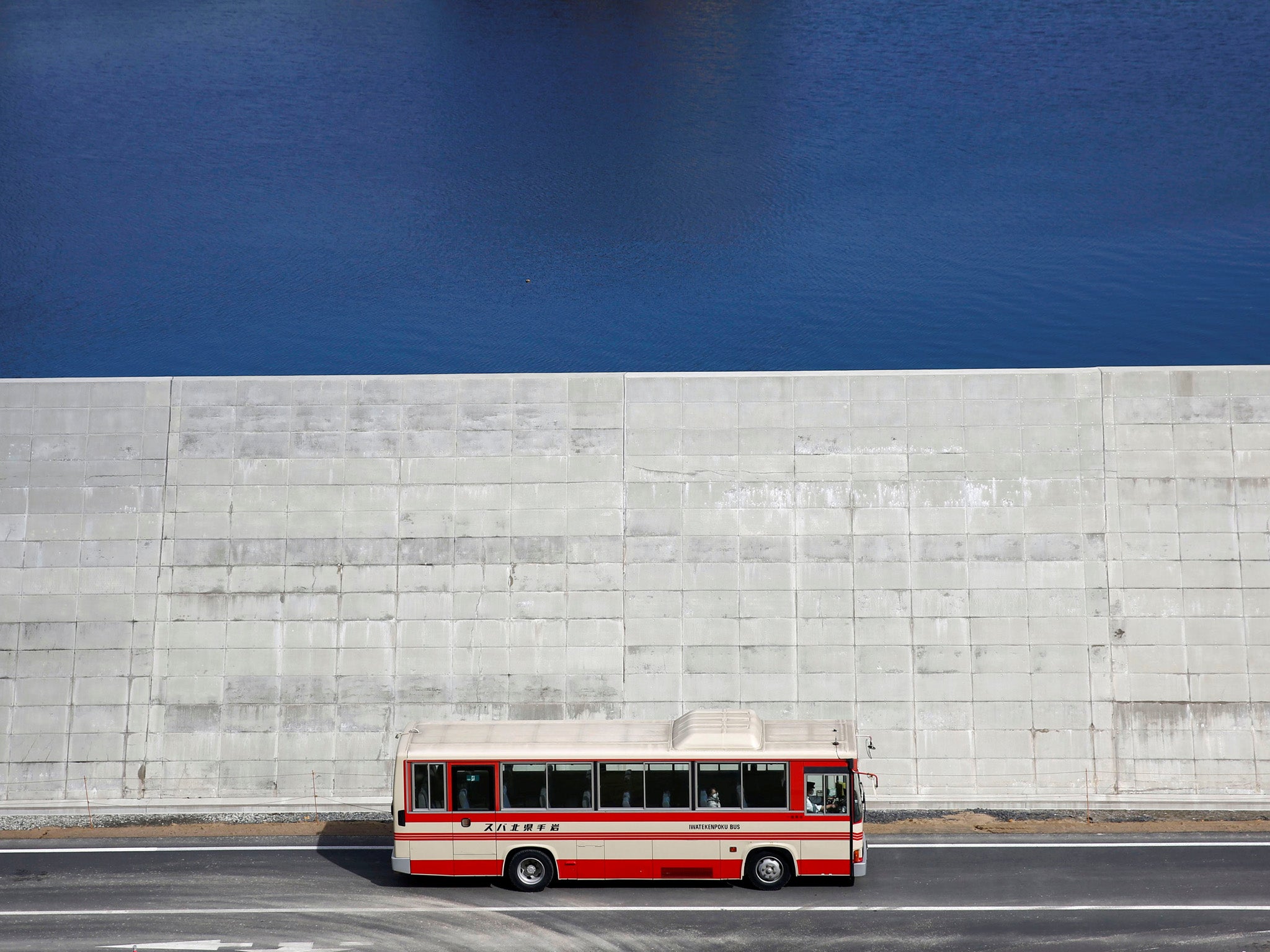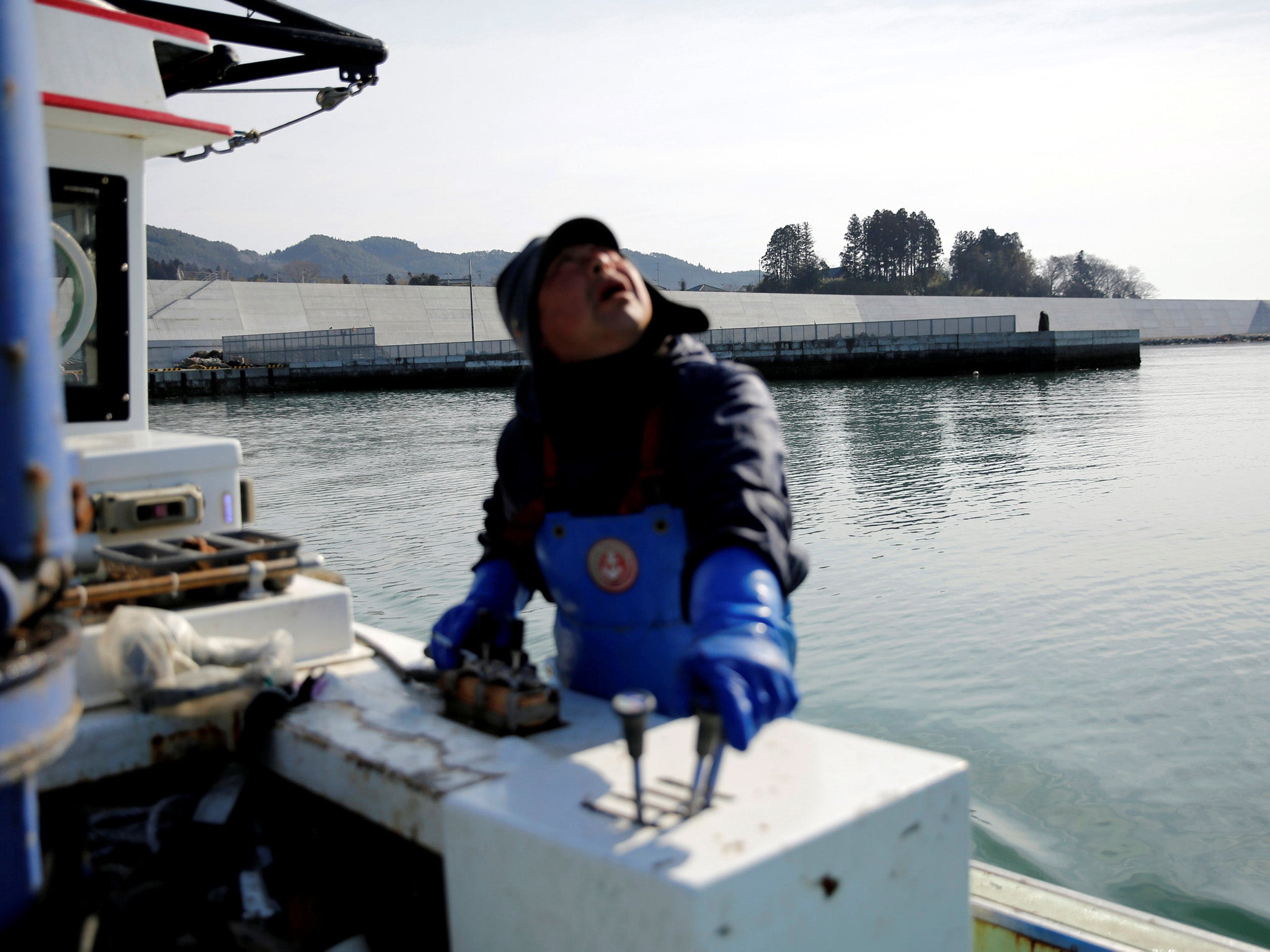Japan: Life after devastating tsunami revealed in pictures
‘It feels like we’re in jail, even though we haven’t done anything bad’

Your support helps us to tell the story
From reproductive rights to climate change to Big Tech, The Independent is on the ground when the story is developing. Whether it's investigating the financials of Elon Musk's pro-Trump PAC or producing our latest documentary, 'The A Word', which shines a light on the American women fighting for reproductive rights, we know how important it is to parse out the facts from the messaging.
At such a critical moment in US history, we need reporters on the ground. Your donation allows us to keep sending journalists to speak to both sides of the story.
The Independent is trusted by Americans across the entire political spectrum. And unlike many other quality news outlets, we choose not to lock Americans out of our reporting and analysis with paywalls. We believe quality journalism should be available to everyone, paid for by those who can afford it.
Your support makes all the difference.When a massive earthquake struck in 2011, Japanese oyster fisherman Atsushi Fujita was working as usual by the sea. Soon after, a huge black wave slammed into his city and killed nearly 2,000 people.
Seven years on, Fujita and thousands like him along Japan’s north-east coast have rebuilt their lives alongside huge sea walls that experts say will protect them if another giant tsunami, which some see as inevitable in a seismically active nation like Japan, was to strike.
The 12.5-metre concrete wall replaced a four-metre breakwater that was swamped in the 11 March 2011 disaster. The earthquake and tsunami, which reached as high as 30 metres in some areas, killed nearly 18,000 people across Japan and triggered a nuclear meltdown at the Fukushima power plant.
“It feels like we’re in jail, even though we haven’t done anything bad,” the 52-year-old says.
Since the disaster, some towns have forbidden construction in flat areas nearest the coast and have relocated residents to higher land. Others, such as Rikuzentakata, have raised the level of their land by several metres before constructing new buildings.

A common thread, though, is the construction of sea walls to replace breakwaters that were overwhelmed by the tsunami. Some 395km (245 miles) of walls have been built at a cost of 1.35 trillion yen (£9.1bn).
“The sea walls will halt tsunamis and prevent them from inundating the land,” says Hiroyasu Kawai, researcher at the Port and Airport Research Institute in Yokosuka, near Tokyo.
“Even if the tsunami is bigger than the wall, the wall will delay flooding and guarantee more time for evacuation.”
Many residents initially welcomed the idea of the walls but have become more critical over time. Some say they were not consulted enough in the planning stages or that money spent on the walls has meant that rebuilding elsewhere, such as housing, has fallen behind.
Others worry the walls will damage tourism.
“About 50 years ago, we came up here with the kids and enjoyed drives along the beautiful ocean and bays,” says Reiko Iijima, a tourist from central Japan, who’s eating at an oyster restaurant across from the sea wall.
“Now, there’s not even a trace of that.”
Part of a wall in the city of Kesennuma, further south, has windows in it – but these too draw complaints.
“They’re a parody,” says Yuichiro Ito, who lost his home and younger brother in the tsunami. “It’s just to keep us happy with something we never wanted in the first place.”
Fisherman Fujita said that while the tsunami had improved oyster farming in the area by stirring up sea floors and removing accumulated sludge, the sea walls could block natural water flows from the land and impact future production.
Many municipalities said the giant walls had to be in place before permission could be granted for reconstruction elsewhere.
“I can’t say things like ‘the wall should be lower’ or ‘we don’t need it’,” says Katsuhiro Hatakeyama, who has rebuilt his bed and breakfast business in the same location as before.
“It’s thanks to the wall that I could rebuild, and now have a job.”
But many find the wall hard to adjust to.
“Everyone here has lived with the sea, through generations,” says Sotaro Usui, head of a tuna supply company. “The wall keeps us apart – and that’s unbearable.”
Join our commenting forum
Join thought-provoking conversations, follow other Independent readers and see their replies
Comments